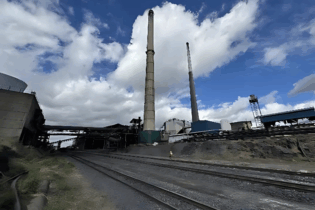Disruptive technologies alter the landscape of established markets, forcing industries to adapt or face increasing inefficiency and redundancy.
Dr Marco Macagnano, Smart Real Estate Leader at Deloitte Consulting Advancements in industry solutions around Smart Real Estate and PropTech allow Deloitte to define the ‘art of the possible’ for the digital disruption of the built environment through integrated systems-design processes and digital twins. Digital Twins enables the industry to consider buildings as complex ecosystems, the result of integrated planning and design, thereby unlocking new potential for asset owners and facilities managers across the project lifecycle.The Digital Twin Explained
The built environment has long been a steadfast pillar of investment and commercial opportunity, yet often falls behind the technology curve due to prolonged incubation periods to fund and develop a project – the average construction project takes around five years from inception to completion. Coupled with the fact that buildings are, by nature, static and inflexible structures (products) designed for a specific purpose at a specific time. This has historically created conditions for rapid redundancy and a loss of ‘touch’ with the changing needs of occupants and operational efficiency of facilities. Industry 4.0 and IoT have presented the construction industry with renewed possibilities, whereby buildings are developed as ‘systems’ with integrated intelligence allowing for ongoing diagnostics and performance monitoring to adapt to changing conditions as is required. Finding a way to link the physical realm of bricks and concrete with the digital realm of bits and bytes requires a medium between the two. This layer of integration is addressed through the Digital Twin.Construction projects today no longer make use of the paper blueprints of old, but instead rely on complex Building Information Models (BIM) that represent all building components and systems in a virtual environment. Every window, fixture, electrical fitting and volumetric calculation is combined within a digital database and represented graphically as a 4-Dimensional model. This is free to be interrogated from every angle, pulled apart according to component layering, material, and even according to construction schedule. BIM therefore serves as a perfect representation of the physical building in virtual space. However, having the information is only half of the battle, since interpreting and analysing the information is where true value is uncovered and where the Digital Twin makes its mark.
As complex, high-value assets with equally complex lifecycles, buildings present an ideal opportunity to realise the benefits of Digital Twins. But buildings are so much more than just physical assets, these are man-made environments where people live and work, facilitate social interactions and knowledge sharing, foster communities, and house economic activity through commercial practices. From a corporate perspective, buildings even drive loyalty and cultivate brand identity. When designed correctly, buildings also help to create healthier, happier and more productive people. Approaching a building as an ecosystem rather than a product creates opportunities for the Digital Twin to optimise every aspect of performance such as energy use, air quality, temperature control, space management, and human-centric facilities that respond to personalised requirements. Digital Twin complexity expands as it incorporates new simulations and use cases, generating a complete view of the entire building across its lifecycle, and integrating any disparate systems to create a centralised repository for all data and decision-making. This is often referred to as the digital thread. Entirely new ways of designing and operate buildings will start to emerge, as professionals will have access to complex simulations of entire buildings that provide a sandbox environment in which to test new designs aided by advanced analytics and machine learning. The entire construction process is planned, visualised and optimised before ground is even broken. Construction sites can therefore be managed more effectively, now able to predict exactly what impacts delays and which decisions to make to affect the overall construction process. The ability to monitor safety and compliance in real time saves lives by predicting emergencies before they occur. Through simulations, workplaces will be able to redefine the way spaces are structured and dynamically reorganised. There will be a shift to bespoke spaces and multimodal workstations that can be adapted in near to real time to respond to the unique needs of different teams. Retail will take advantage of simulations to test new store layouts and design spaces that engage consumers in a more meaningful way. The health sector will take advantage of simulations of staff and patients to minimise friction and bottlenecks, allocate medical supplies more efficiently and optimise staff rostering to meet both current and predict future patient needs. The Digital Twin therefore represents a major driver of change because of these powerful predictive capabilities, ushering in a new era of built environment efficiency and resiliency.







